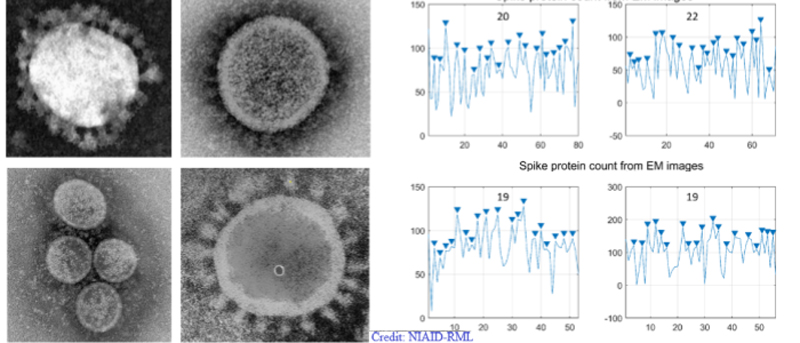 Research
Research IIT Kharagpur model shows SARS-CoV-2 alters lung cell metabolism, could help therapeutics
Kharagpur/IBNS: A research model developed by IIT Kharagpur researchers predicting alteration in metabolic reaction rates of lung cells post SARS-CoV-2 infection is expected to lead to a better understanding of metabolic reprogramming and aid the development of better therapeutics to deal with the viral pandemics, according to the researchers.
COVID-19 pandemic has been posing unprecedented threats to the whole world.
Among its many perils is the cellular metabolic system of those who tested positive.
Coronaviruses are known to hijack the metabolism of lung cells.
This threat makes it absolutely imperative to understand the mechanism of metabolic reprogramming of host human cells by SARS-CoV-2.
Researchers at IIT Kharagpur have, for the first time, have reported a method to find an alteration in metabolic reaction rates inside lung cells when they are affected by virus/pathogens.
As the method finds and reports critical aspects of physiology, which are affected by SARS-CoV-2 infection, it will enable the discovery of therapeutic targets, according to the researchers.

Dr. Amit Ghosh, Assistant Professor, School of Energy Science & Engineering, IIT Kharagpur said, "We have used the gene expression of normal human bronchial epithelial cells (NHBE) infected with SARS-CoV-2 along with the macromolecular make-up of the virus to create this integrated genome-scale metabolic model. The growth rate predicted by the model showed a very high agreement with experimentally and clinically reported effects of SARS-CoV-2.”
Scientists have been trying to extract information from the human genome sequences for the past two decades to gather a better understanding of genetic disorders thus allowing us to penetrate deeper into the fabric of life and enable better therapeutics, the researchers said.

Talking about this new development, researcher Piyush Nanda (B.Tech.-M.Tech Dual Degree, Biotechnology, 2020, currently a graduate student at Harvard University) said, “In this model development, we have explored how metabolism works and how it is altered in diseases. Our work involved measuring how the tens of thousands or more complex chemical reactions change when biological cells are intruded on by an uninvited guest like SARS-CoV-2, which would help improve our understanding of diseases.”
Using the power of genomics the researchers posed the operation of reactions as a set of mathematical equations and solved it to obtain which reactions are altered in the cells when SARS-CoV-2 infects a person.
“A better understanding of metabolic reprogramming would aid in the design of better therapeutics to deal with the COVID-19 pandemic,” said Nanda.
Further, the researchers have identified pathways like fatty acid synthesis and lipid metabolism that can be targeted by novel drugs. This model is based on genome-scale differential flux analysis (GS-DFA) in context-specific metabolic models.
Dr. Ghosh said that analysis of intercellular metabolic fluxes (i.e. rates of all metabolic reactions) in disease biology is opening up new avenues for therapeutic interventions. Numerous diseases lead to metabolic pathway alterations and it is becoming increasingly important to be able to quantify the difference under normal and diseased conditions.
He said, “Using our method we have observed the alterations between diseased and normal metabolic states in the case of SARS-CoV-2 infection which have been proven using human patients data. The model will allow researchers to understand the wide spectrum of viruses that manipulate human metabolism and will help to design better therapeutics in COVID-19 treatment leveraging the power of systems biology.”
In the case of SARS-CoV-2 infection, the researchers predict that lipid metabolism particularly fatty acid oxidation, cholesterol biosynthesis and beta-oxidation cycle along with arachidonic acid metabolism to be most affected which was confirmed with clinical metabolomics studies.
The research was published in the international journal PLOS Computational Biology
Article Source: Genome Scale-Differential Flux Analysis reveals deregulation of lung cell metabolism on SARS-CoV-2 infection
Nanda P, Ghosh A (2021) Genome Scale-Differential Flux Analysis reveals deregulation of lung cell metabolism on SARS-CoV-2 infection. PLOS Computational Biology 17(4): e1008860. https://doi.org/10.1371/journal.pcbi.1008860
Support Our Journalism
We cannot do without you.. your contribution supports unbiased journalism
IBNS is not driven by any ism- not wokeism, not racism, not skewed secularism, not hyper right-wing or left liberal ideals, nor by any hardline religious beliefs or hyper nationalism. We want to serve you good old objective news, as they are. We do not judge or preach. We let people decide for themselves. We only try to present factual and well-sourced news.







